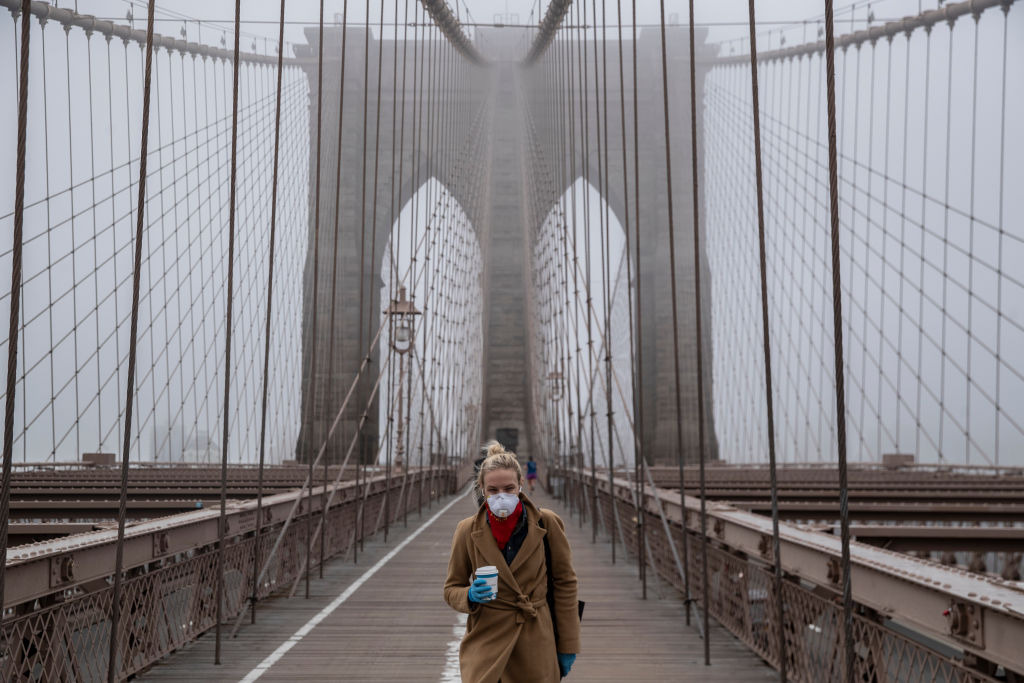
The best practices for controlling an infectious disease like COVID-19 aren’t easy to follow—keeping six feet apart from others, wearing face masks in public, and, if you’re a health care worker, wearing shields to protect your eyes as well.
But in a study published Monday in The Lancet, researchers provide the strongest evidence yet that these practices do indeed lower the risk of spreading the virus.
An international group of scientists, led by senior author Dr. Holger Schunemann, professor of clinical epidemiology and medicine at McMaster University in Ontario, Canada, analyzed 172 studies conducted in 16 countries that looked at the connection between social distancing, wearing masks, and wearing eye protection, and the risk of transmitting the virus. The studies included people with COVID-19 infections in addition to those with two other diseases caused by coronaviruses, SARS and MERS. The studies were observational, meaning that they tracked infection rates among people who practiced any of the aforementioned behaviors. Of the 172 studies, 44 (involving more than 25,000 participants) also included comparisons between those who followed the behaviors and those who did not.
When it comes to social distancing, the analysis showed that, on average, the risk of getting infected when remaining 1 meter (a little more than 3 ft) from an infected person was about 3%, while staying less than 1 meter apart upped the risk to 13%. The further people stand away from one another, the lower their risk. In fact, the risk drops by half for every additional meter of distancing up to 3 meters (about 10 ft).
“What we tried to do was bring everything together and sort out what distance might be the most effective, rather than an arbitrary threshold,” says Schunemann. Based on how far respiratory droplets from coughs or sneezes generally travel, most public health policies currently recommend standing at least 2 meters (about 6.7 ft) apart in public areas, which the study findings support. “The virus doesn’t know what a meter is, or what six feet is,” says Schunemann. “What this evidence suggests is that two meters, or 6.7 feet, appears that it might be more protective than one meter or three feet.”
The data also supported the benefits of eye shields for health care workers. The risk of infection among people who wore glasses, goggles or other face shields was 6% compared to 16% among those not wearing such protection.
The studies included health care workers in hospitals, as well as people living in households with an infected person. The researchers tracked whether those in close contact to people who had a coronavirus infection kept their distance, wore a mask or eye protection, and whether they too got infected.
“I was surprised by the magnitude of the effect,” says Schunemann. “In epidemiology we often see small effects, and all the effects we saw here are considered large or very large.”
He says the findings support current public health advice to reduce the risk of spreading COVID-19, but adds that more detailed studies are needed. For instance, it’s not yet clear whether 1 meter of distance might be sufficient in some settings (compared to the 2 meters that are currently recommended). In addition, larger distances might be needed when people are gathered in denser settings or closer quarters—and it’s still uncertain what the ideal distance in these scenarios would be.
In health care settings like hospitals, similar studies are needed to tease apart which types of face masks are best for different situations. The study found that medical-grade N95 masks and surgical paper masks used in medical settings offered the best protection, but that self-made cloth masks are still effective for the general public. These data, Shunemann says, support wearing a mask both to reduce the risk of spreading of the virus if you’re infected, and to lower the possibility of becoming infected if you’ve not yet caught the virus. “The type of masks that should be worn, and who wears the masks, should be investigated further in randomized controlled trials,” says Schunemann. “But having said that, my interpretation is that wearing even a self-made mask is better than not wearing anything.”
More Must-Reads from TIME
- Where Trump 2.0 Will Differ From 1.0
- How Elon Musk Became a Kingmaker
- The Power—And Limits—of Peer Support
- The 100 Must-Read Books of 2024
- Column: If Optimism Feels Ridiculous Now, Try Hope
- The Future of Climate Action Is Trade Policy
- FX’s Say Nothing Is the Must-Watch Political Thriller of 2024
- Merle Bombardieri Is Helping People Make the Baby Decision
Contact us at letters@time.com